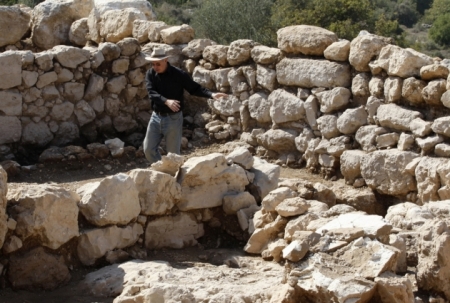Crucifixion Nails, Other Clues of Jesus' Life and Times Discovered by Israeli Archaeologists

Israeli archaeologists have discovered nails used in crucifixions, along with a host of other clues shedding light on the life and the times of Jesus Christ from the first century C.E. in and around Jerusalem and the Galilee.
"Nowadays we can restore in a very clear way the daily life during that period, from the moment of birth, through the person's life, his dining customs, where he traveled across the land, and until his day of death including his burial," Gideon Avni, head of the Israel Antiquities Authority's archaeology division, told AFP.
"Over the past 20 years we have made a great leap in understanding the way of life of Jesus and his contemporaries," he said.
Researchers are exploring storerooms containing vases, cooking utensils, a wine press, nails used in crucifixions, jewelry and other items which fill in information about how people lived at the time.
"Every week new elements are discovered which allow a better understanding of this period," Avni continued.
"The names on the ossuaries were recognizable, with known figures that are mentioned in the Talmud for example, and this is how you create the connection between what you find nowadays and the people who lived here 2,000 years ago."
AFP noted that the findings are being released ahead of Easter celebrations, which mark the resurrection of Jesus following His crucifixion.
The Antiquities Authority noted that it is in custody of over one million relevant objects, and receives roughly 40,000 new finds from about 300 archaeological sites each year.
"The essential thing for us is to be able to understand very precisely the way of life in the time of Jesus, from birth to death," Avni said.
Easter generally prompts a number of exposition pieces on the life and times of Christ. CNN is airing its series "Finding Jesus: Faith, Fact, Forgery," which aims to examine the historical Jesus using the latest scientific techniques and archaeological research.
Christian author John Stonestreet, co-host of BreakPoint, criticized CNN's portrayals, arguing that the media giant is mostly looking to question Christ's existence.
"This is the very definition of fake news: No credible historian believes Jesus is a myth. Even among skeptics of religion, that theory has been abandoned," Stonestreet wrote last week.
"None other than Bart Ehrman, the agnostic biblical scholar and fierce critic of the New Testament, calls Jesus-deniers Internet conspiracy theorists trying to sell books, and compares them to Holocaust-deniers," he noted.
Pastor A.R. Bernard, who contributes analysis on the CNN series, argued that the program examines a legitimate question, however.
"There are a lot of people who are still seeking Jesus," Bernard said in an interview with Townhall earlier in March. "He is the most debated figure in the last 2,000 years. And people are still trying to make sense of it and the Christian religion."






















